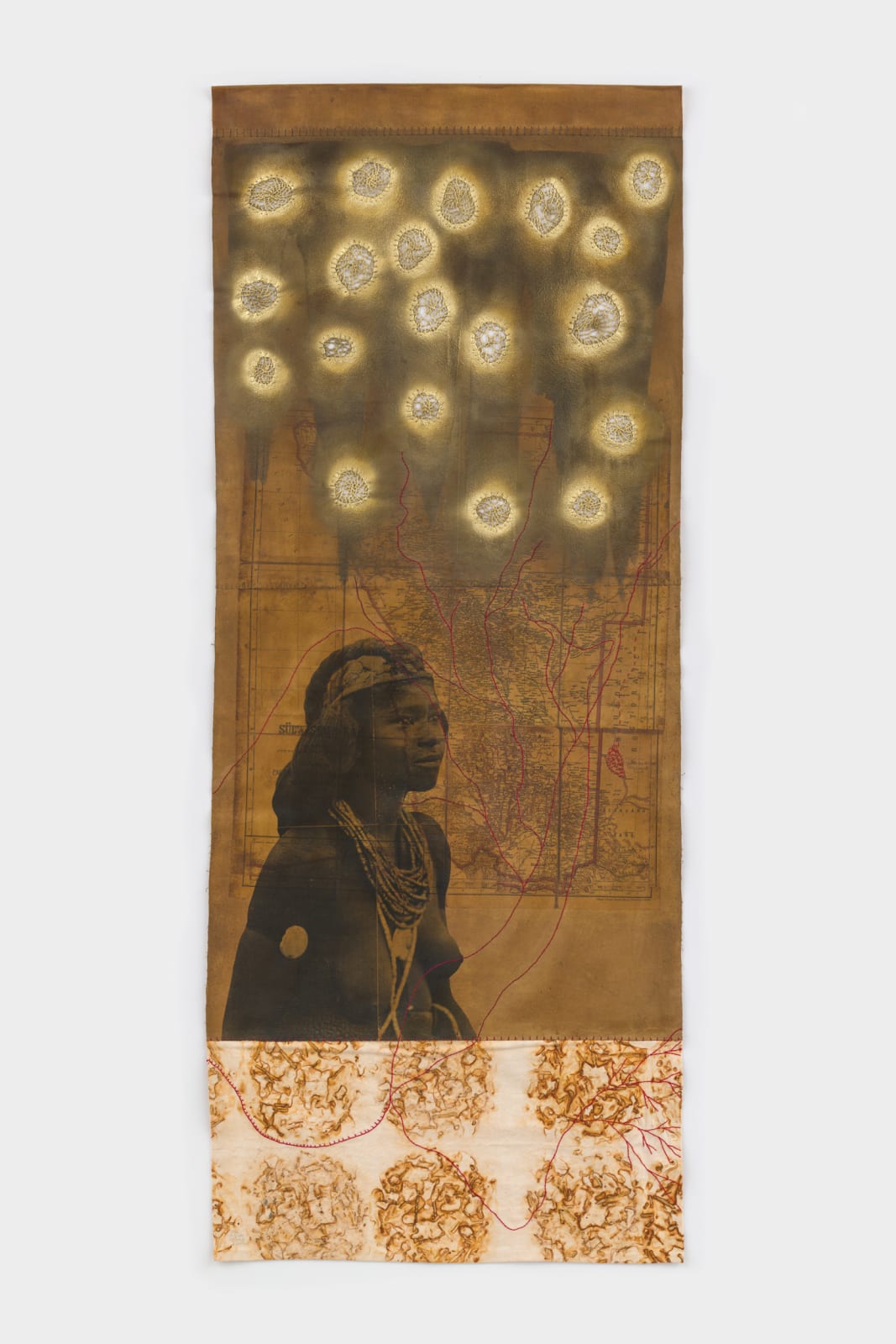
Tuli Mekondjo
Oudjuu we du loshilongo/ The burden of the soil of the land, 2022
Image transfer, mahangu, resin, spray paint, acrylic ink, cotton embroidery thread, cotton crochet yarn, and rusted cotton fabric on canvas
209.6 x 85.1 cm
82 1/2 x 33 1/2 in
82 1/2 x 33 1/2 in